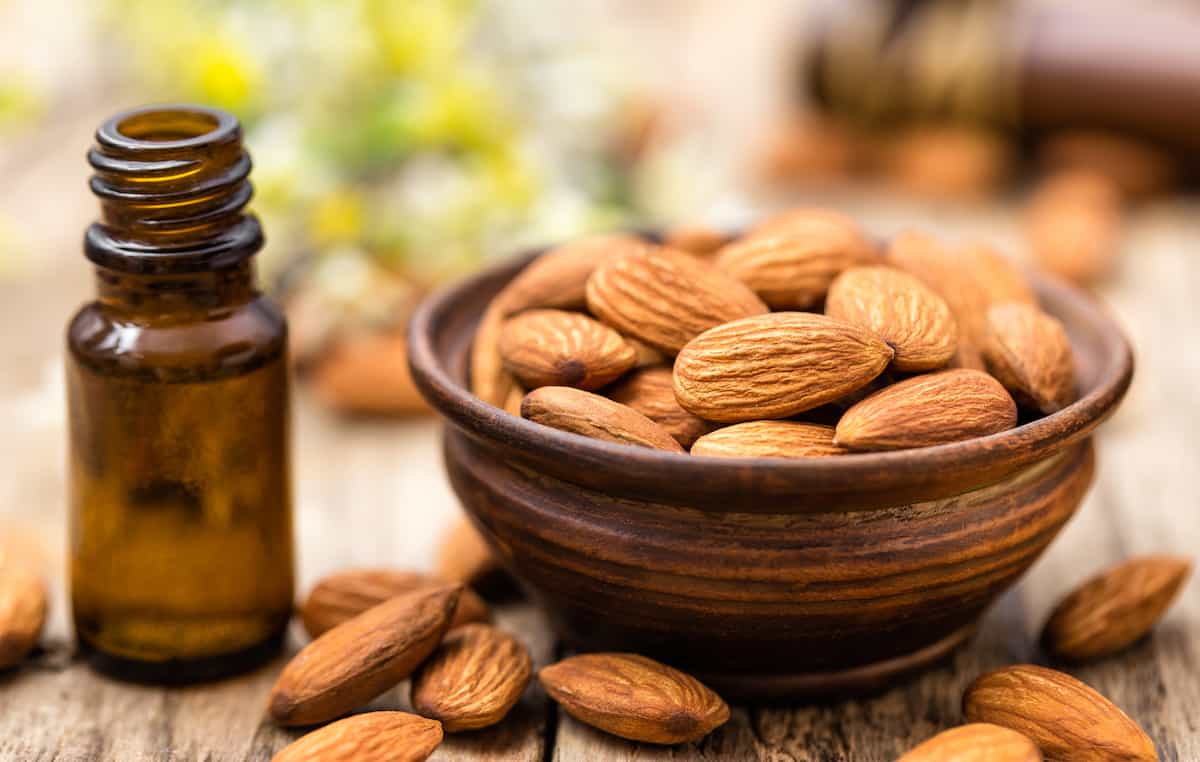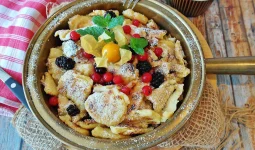Have you ever started a baking project only to realize you’re out of vanilla extract? Don’t worry, you’re not alone.
Vanilla extract is a common ingredient in many recipes but is not the only option. You can easily substitute vanilla extract with ingredients you might already have in your kitchen.
For example, vanilla bean paste can add a rich, flavorful touch to your desserts.
It’s made from the seeds inside vanilla bean pods, offering a bold taste that beautifully replicates real vanilla extract.
If you don’t have any vanilla-based products on hand, maple syrup can work as a sweet and aromatic replacement.
You don’t need to run to the store whenever you run out of vanilla extract.
With options like vanilla sugar or scraped seeds from a vanilla bean, your baked goods can still taste amazing.
Keep reading to find out which substitute will best fit your recipe and bring that vanilla warmth to your next bake.
1. Almond Extract

Almond extract is a strong flavoring perfect for adding a nutty taste to recipes. It is a popular substitute for vanilla extract.
Use about half as much almond extract as vanilla. For example, if a recipe calls for 1 teaspoon of vanilla extract, use only 1/2 teaspoon of almond extract.
Almond extract pairs well with other substitutes for vanilla extract:
- Vanilla bean paste: Rich and versatile, swap 1 teaspoon of vanilla extract with the same amount of vanilla bean paste.
- Vanilla sugar: Add extra sweetness by replacing each teaspoon of vanilla extract with 1-2 teaspoons of vanilla sugar.
- Whole vanilla beans: Use one vanilla bean pod for each teaspoon of vanilla extract required; scrape out the seeds and use them in your recipe.
- Vanilla powder: Replace vanilla extract with an equal amount of vanilla powder for a similar taste.
If you like experimenting in the kitchen, try making your own homemade vanilla extract. Combine vanilla beans and vodka in a jar and let it sit for a few weeks.
For those who prefer non-alcoholic options, you can mix vanilla bean pods or vanilla powder into your recipes for a delightful flavor.
Combining almond extract with vanilla beans or paste provides a complex and rich taste profile. This combination can elevate your dishes, adding a unique twist.
Use almond extract wisely; it can be a fantastic addition to your baking toolkit.
2. Vanilla Powder and Sugar
Vanilla Powder is a fantastic substitute for vanilla extract. It offers a rich, concentrated flavor without the alcohol content found in pure vanilla extract.
Vanilla powder is made by grinding dried vanilla beans, which can come from different regions like Madagascar, Mexico, and Tahiti.
You generally need only half the amount of vanilla powder you would use for liquid vanilla extract.
For example, use ½ teaspoons of vanilla powder for every teaspoon of vanilla extract. This can be especially useful in recipes where you want to avoid adding extra liquid.
Vanilla Sugar is another great option. It is simply granulated sugar infused with vanilla beans.
You can often find vanilla sugar pre-made in stores, but it’s also easy to make at home.
To make your own, bury a vanilla bean in a sugar jar and let it sit for a week or two.
When substituting vanilla sugar for vanilla extract in recipes, replace 1 teaspoon with 1 teaspoon of vanilla sugar.
This method adds a tasty hint of vanilla to baked goods, desserts, and even your morning coffee.
Vanilla sugar works well in recipes like cookies, cakes, and beverages.
The fine sugar crystals dissolve easily, distributing the vanilla flavor evenly throughout your dish.
Whether you use powdered vanilla or vanilla sugar, both options provide a delightful, aromatic touch without vanilla extract.
Using these alternatives is a great way to experiment with the unique flavor profiles of vanilla beans from around the world, such as those from the South Pacific or Bourbon vanilla beans from Madagascar.
3. Honey
Honey can be a great substitute for vanilla extract. It adds a sweet flavor to your baked goods and imparts a slight floral taste.
Since honey is sweeter than vanilla, use it in controlled quantities. A common ratio is to replace 1 tablespoon of vanilla extract with 1/2 tablespoon of honey. This helps balance the sweetness.
Honey also pairs well with cinnamon, nutmeg, and citrus zest. These combinations create interesting and tasty variations in your recipes.
For instance, add a cinnamon or lemon zest pinch to enhance the flavor.
| Vanilla Extract Substitute | Ratio |
|---|---|
| Honey | 1:1 |
| Honey with spices | 1:1 (plus a pinch) |
Use honey in recipes where its liquid content won’t affect the texture. It works best in cakes, cookies, and muffins.
For example, when making sugar cookies, honey can add a nice depth of flavor without overpowering the other ingredients.
You can also experiment with combining honey and other vanilla extract substitutes.
For instance, mixing honey with a bit of maple syrup or vanilla-flavored milk can create a unique flavor profile.
Honey doesn’t taste much like vanilla but provides a similar sweetness and richness.
Just remember to adjust the sweetness of other ingredients to keep your dish balanced. This small tweak can lead to delicious results every time!
Vanilla Bean Paste
Vanilla bean paste offers a rich, flavorful alternative to vanilla extract.
Consistency and Appearance
Vanilla bean paste has a thick, syrupy texture and includes specks of vanilla seeds, adding flavor and visual appeal.
This makes it great for recipes where you want to see the flecks of vanilla.
How to Use
You can substitute vanilla bean paste for vanilla extract using a 1:1 ratio. For example, if a recipe calls for 1 teaspoon of vanilla extract, use 1 teaspoon of vanilla bean paste instead.
Flavor Profile
The paste provides a more intense vanilla flavor compared to vanilla extract.
It is a fantastic choice for desserts like custards, ice creams, and cookies.
Storage
Store vanilla bean paste in a cool, dark place. Ensure the container is airtight to maintain its rich flavor.
Comparison with Other Vanilla Substitutes
| Substitute | Ratio | Visual Appeal | Flavor Intensity |
|---|---|---|---|
| Vanilla Bean Paste | 1:1 | High | Strong |
| Vanilla Extract | 1:1 | None | Medium |
| Vanilla Beans | 1 bean: 1 tsp extract | High | Strong |
| Vanilla Powder | 1:1 | Low | Medium |
| Homemade Vanilla Extract | 1:1 | None | Medium |
Vanilla bean paste stands out due to its flecks of ground vanilla. You can even use it to make vanilla sugar by mixing it with granulated sugar. This adds a gourmet touch to baked goods.
For a DIY approach, consider making your vanilla extract using whole vanilla beans.
Slice the beans, scrape out the seeds, and steep them in alcohol for several weeks. This homemade version can match the flavor intensity of vanilla bean paste.
5. Maple Syrup
Maple syrup is a great substitute for vanilla extract. Its sweet, rich flavor can enhance baked goods.
When using pure maple syrup, replace it using a 1:1 ratio. For example, if a recipe calls for 1 teaspoon of vanilla extract, use 1 teaspoon of maple syrup.
Maple syrup isn’t just for pancakes. It can also be used in cookies, cakes, and beverages. It adds a unique, caramel-like flavor.
If you have maple extract, it offers a strong, distinctive taste. Use it carefully. Start with a smaller amount and adjust to taste.
Want to try something different? Combining maple syrup with a pinch of cinnamon or nutmeg can add warmth to your recipe. Citrus zest like lemon or orange zest can brighten the flavor, too.
For a twist, use honey as an alternative. It has a similar sweetness to maple syrup but gives a floral note.
Another option is vanilla-flavored milk which can work well in custards and puddings.
Maple syrup can be versatile, but remember to adjust baking times slightly since it’s a liquid.
Experiment and enjoy the unique flavors it brings! For more detailed tips, you can check out how Food Network suggests using maple syrup in place of vanilla extract.
6. Bourbon
Bourbon is a great substitute for vanilla extract in recipes. Its warm, vanilla-like flavor can enhance baked goods.
Why Use Bourbon?
Using bourbon adds a unique depth to your dishes. Its vanilla notes make it an excellent one-for-one replacement for vanilla extract.
How to Substitute
- One-to-One Ratio: Replace 1 teaspoon of vanilla extract with 1 teaspoon of bourbon.
- Flavor Boost: Bourbon enhances the richness of cakes, cookies, and even frostings.
Other Liquor Options
If you don’t have bourbon, you can try:
- Dark Rum: Offers a deep, caramel flavor.
- Whiskey: Adds a bold and complex taste.
- Brandy: Gives a sweet, fruity note.
- Vodka: A neutral option that won’t alter the flavor too much.
- Vanilla Liqueur: For a more pronounced vanilla flavor.
Tips for Success
Consider the alcohol content when adding bourbon to your recipes. While the alcohol mostly cooks off during baking, a small amount may remain.
If you prefer a non-alcoholic option, you can try almond extract or maple syrup.
Bourbon can transform baked goods, giving them a richer flavor profile.
Experiment with this versatile substitute to create delicious desserts.
7. Vanilla-Flavored Milk
Vanilla-flavored milk is a simple and effective substitute for vanilla extract.
It can be used in a 1:1 ratio, which means that if your recipe calls for 1 teaspoon of vanilla extract, you can use 1 teaspoon of vanilla-flavored milk.
Tips for Using Vanilla-Flavored Milk:
- Ensure the product is specifically labeled as “vanilla-flavored” to capture the essence.
- It’s best used in recipes that already call for milk or a milk alternative.
Benefits:
- Easy to find in most grocery stores.
- Adds a creamy texture to your recipes.
Recipes for Vanilla-Flavored Milk Substitution:
- Pancakes and Waffles: Adds a subtle vanilla flavor without the need for extract.
- Smoothies: Enhances the sweetness naturally.
- Baked Goods: Works well in cookies, cakes, and muffins.
Other Vanilla Substitutes:
If you don’t have vanilla-flavored milk, you can consider other substitutes like:
- Vanilla Bean Paste: Thick and sweet, packed with vanilla seeds.
- Vanilla Powder: Made from ground vanilla beans, suitable for dry mixtures.
- Vanilla Sugar: Granulated sugar infused with vanilla beans.
Experimenting with Flavors:
Combining vanilla-flavored milk with other substitutes can create unique flavors. For example, pairing it with vanilla bean paste can enhance the vanilla essence in your desserts.
This substitution method is especially handy for those who enjoy experimenting in the kitchen. Try it next time you run out of vanilla extract!
For more details, you can check out this helpful guide on vanilla-flavored milk.
8. Coffee
Coffee can be a surprising but effective substitute for vanilla extract. Its rich, deep flavor can enhance many recipes.
How to Use It
In baking, swap vanilla extract for coffee at a 1:1 ratio. For example, if a recipe calls for one teaspoon of vanilla, use one teaspoon of strong-brewed coffee instead.
Ideal Recipes
- Cookies: Use coffee to add a mocha twist to your chocolate chip cookies.
- Cakes: Coffee enriches chocolate cakes, making them even more flavorful and moist.
- Custards: Incorporate coffee for a unique depth of flavor that pairs well with creamy custards.
More Uses
- Desserts: Coffee works well in desserts like tiramisu or coffee-flavored ice creams.
- Sweet Marinades: Add coffee to sweet marinades for a deep, savory-sweet balance.
- Smoothies and Yogurts: A splash of coffee can enhance your morning smoothies or yogurt bowls.
Benefits
Coffee’s strong aroma and taste can mask the absence of vanilla while adding its unique profile.
This makes it versatile for many dishes, from baked goods to cold desserts.
Explore more ways to use coffee as a vanilla substitute in your favorite recipes.
9. Vanilla Rum
Vanilla rum can be a great substitute for vanilla extract in many recipes. You might already have it in your liquor cabinet.
How to Use:
- Replace 1 teaspoon of vanilla extract with 1 to 2 teaspoons of vanilla rum.
- You can adjust the amount depending on your taste preference.
Flavor Profile:
- Vanilla rum adds a rich and deep flavor.
- It brings a sweet, slightly spicy undertone to cakes and cookies.
Good for:
- Baking: Cakes, cookies, muffins
- Cooking: Sauces, marinades
- Drinks: Cocktails, coffee
Tip:
- If you don’t have vanilla rum, you can use dark rum with a splash of vanilla liqueur.
Alternatives:
- Almond extract provides a different but delicious flavor.
- Bourbon or whiskey can add a nice kick.
- Brandy or vodka mixed with a bit of vanilla extract works, too.
Trying these substitutes can add a fun twist to your recipes.
Enjoy experimenting!








